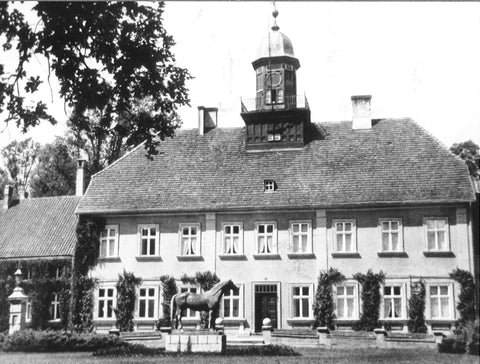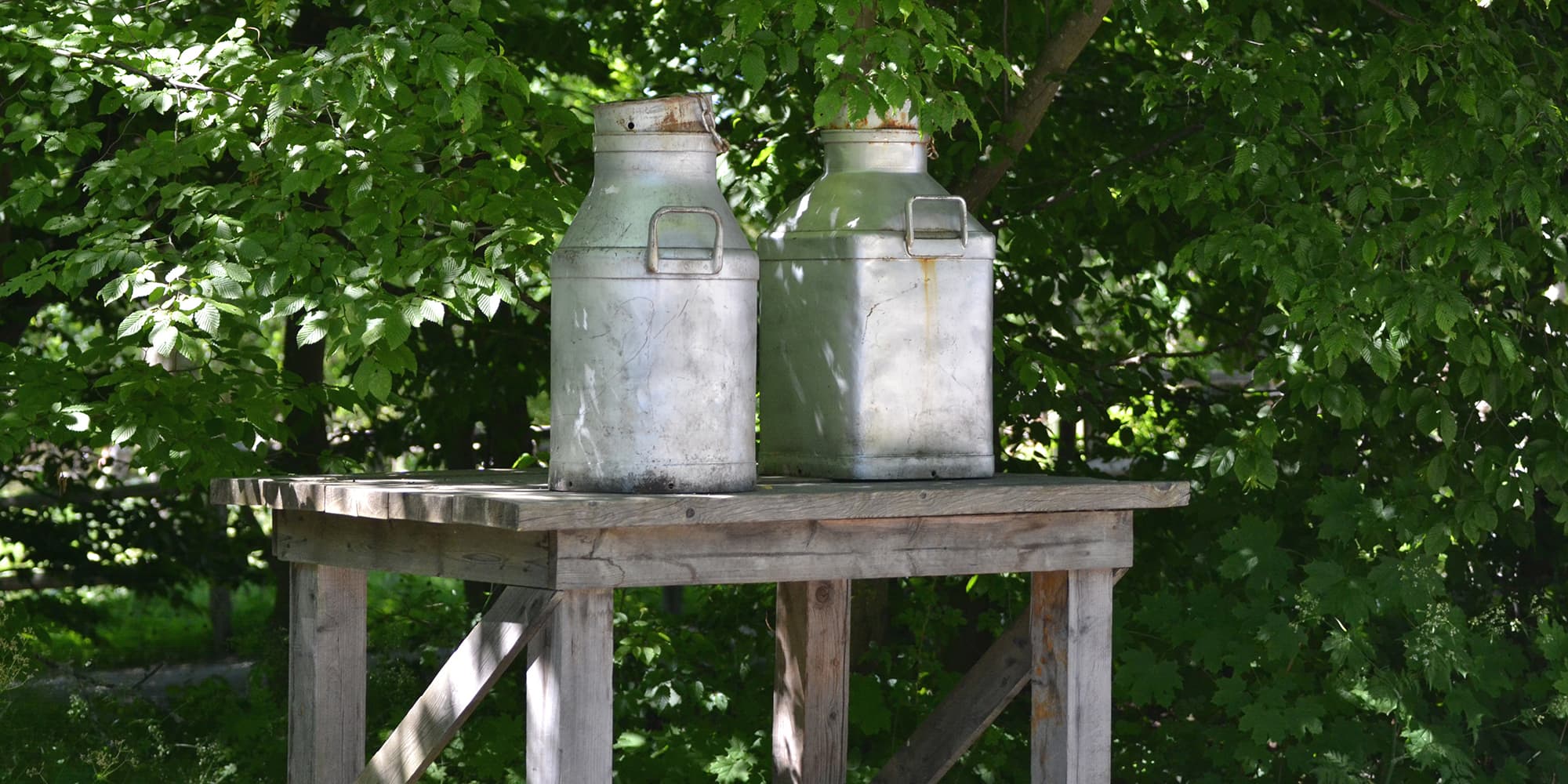Trakehner (pronounced Tra-KAY-ner) horses are the oldest of all warmblood breeds.
During a history reaching back more than 400 years, this breed has been systematically “engineered” for performance-first as work horses in East Prussia, later as the refined sport horses that have gained the Trakehner breed its international acclaim.
The breed started centuries ago from a base of small East Prussian horses, the “Schwaike,” which had great endurance and versatility. It was originally crossed with larger horses to provide mounts for warfare, general transportation, and agricultural work.

But in the early 18th century, the father of Fredrick the Great, who was the King of Prussia, began to see the need for a new type of cavalry mount for his army. War tactics had changed and required a lighter horse more comfortable to ride over long distances, with more endurance and speed than the heavy horses previously needed to carry armor and haul military equipment. So he chose the best horses from seven of his royal breeding farms, and in 1732 moved them all to the new royal stud at Trakehnen, East Prussia. Through careful use of only English Thoroughbred and “oriental” blood, a horse of nobility, elegant movements and great endurance was developed. Trakehners carried their riders into battle against Napoleon at Waterloo in 1815 and were sought after by the military of many European countries.
Although the Trakehnen stud had large mare herds, East Prussian farmers were also encouraged to bring their mares, by then known for their hardiness and quality, to Trakehnen’s stallions. This allowed for the rapid transformation of the breed into sure-footed, intelligent, and athletic horses. By 1918, 60,000 mares were bred to East Prussian stallions each year.

One of the greatest influences on the breed was the Thoroughbred stallion Perfectionist, son of Persimmon, who won the English Derby and the St. Leger in 1896. The best of his sons, Tempelhüter, was the main sire at Trakehnen in the 1920s and provided a powerful line that is recognized as the foundation for the modern Trakehner.
During the 1920s and 1930s the breed was seen for the true performance horse it was. The Gold and Silver medals in dressage in the 1924 Olympics went to Trakehners. In the 1928 Olympics, a Trakehner won the Bronze medal in the three-day event.

In 1936, known as the “Year of the Trakehner,” a Trakehner named Kronos won the individual and team Gold medals in dressage, while another, Absinth, took the individual Silver and shared the team Gold medal. A Trakehner named Nurmi won Gold in three-day eventing. Also that year, the German jumping team came to the United States to compete atMadison Square Garden and a Trakehner, Dedo, was on their Prix des Nations winning team.
Shortly after that period of time, however, came the darkest days in the history of the breed. The breed population was reduced by half in the First World War. Without enough time between the World wars to recover their losses, the Second World War would bring the breed to the edge of extinction.

Several attempts were made to move the horses to safety, but few made it. As the war neared its end in late 1944-early 1945, the Trakehnen Stud and local residents were finally given official permission by Nazi administrators to evacuate, just ahead of the advancing Russian front. The journey away from the fighting has become known as “The Trek” because it was an evacuation so long and so tragic, it had no comparison. East Prussian refugees and their Trakehner horses began a 600-mile journey to safety without proper rations or shelter. Hitching their precious breeding stock to carts loaded with their possessions, the populace-almost entirely women, children, and elderly people-fled. It is not unusual to hear Trek survivors or their descendants telling the story of losing their horses and family members during the trip. Many of the mares, heavy with foals, had to be left to forage for themselves or to be captured by the Russians.
Over snow drifted roads, frozen rivers and seas, they made their way westward while constantly being strafed from the air and pursued by Russian troops. Many people and horses on The Trek were lost when they fell through the ice. Almost 600,000 East Prussian citizens died. As for their horses, from a Trakehner breeding population of 25,000 broodmares and 1200 approved stallions, only 1500 arrived in Germany. From the main stud of Trakehnen, only 27 broodmares could be saved. The once proud and beautiful horses surviving limped into Germany, suffering from open wounds from shrapnel, and with burlap bags frozen to their feet in place of shoes. What horses the Russian army did not consume for food either perished or starved. A few were confiscated and taken behind the Iron Curtain to create very small breeding populations in Russia, Poland and Lithuania. The most important stallions were lost during The Trek. Some were known to have been shot by the Russians.

Others were captured and taken to Kirov, where they established a stud responsible for producing one of today’s most powerful sport horses, the Russian Trakehner. Almost 60 young colts were evacuated to the German state stud at Celle earlier in the war, but some were gelded and others were confiscated by the English, French and American armies at war’s end. For example, the English army took some of the best black and chestnut stallions away for the Royal cavalry in London.
The surviving horses were accounted for and on October 23, 1947 the East Prussian Studbook Society from 1890 was dissolved and the Association of Breeders and Friends of the Warmblood Horse of Trakehner Origin, known today as the Trakehner Verband, was created. Among the greatest obstacles the organization faced was that, unlike other German warmblood breeds, the Trakehner had no mother state and could not depend on government funding. The re-establishment of the breed originally depended on the determination of its members and the generosity of others.
The Trakehner is the only warmblood breed to maintain a “closed” stud book. That is, although select Thoroughbred, Arabian and Shagya blood is judiciously added, no other warmblood is ever allowed. On the other hand, Trakehners have for many years been routinely used as a “refiner” of other breeds. Influential stallions include Herbststurm who influenced the Oldenburg, Marco Polo for the Dutch Warmblood, Ibikus for the Danish Warmblood, Polarstern for the Swedish Warmblood and Chrysos for the Westphalian.
Perhaps one of the most influential Trakehner sires for another warmblood is that of Abglanz for the Hanoverian. He is credited with bringing about improvement in the head and neck of the Hanoverians of that day, and sired 19 approved sons. Abglanz was one of the young colts evacuated to the stud at Celle early in World War II, as noted in the history above. He spent his entire breeding career there siring foals with Hanoverian mares, so his influence in the Trakehner studbook was limited. Nevertheless, he still produced nine registered Trakehner daughters and three approved Trakehner sons: Kassio, Morgenglanz (a Breyer model) and Valentin.

Mares and stallions anywhere in the world are required to be inspected and approved for their offspring to be fully registered with a Trakehner Verband association. Trakehner stallions already approved by their nation’s Trakehner association frequently go through inspections by other warmblood registries and are approved for breeding with them.
The Breed Today
Although once nearly wiped out, the Trakehner breed is well into the process of recovering. Today it is the smallest in number of the warmblood breeds, with a population only about one-tenth of the numbers of other breeds. While some warmbloods produce around 15,000 foals a year, the Trakehner may have 1,000-1,200 foals born. However, because approved Trakehner stallions are so often used to improve other breeds, there is much more Trakehner blood in the warmblood world than shows by registration.
